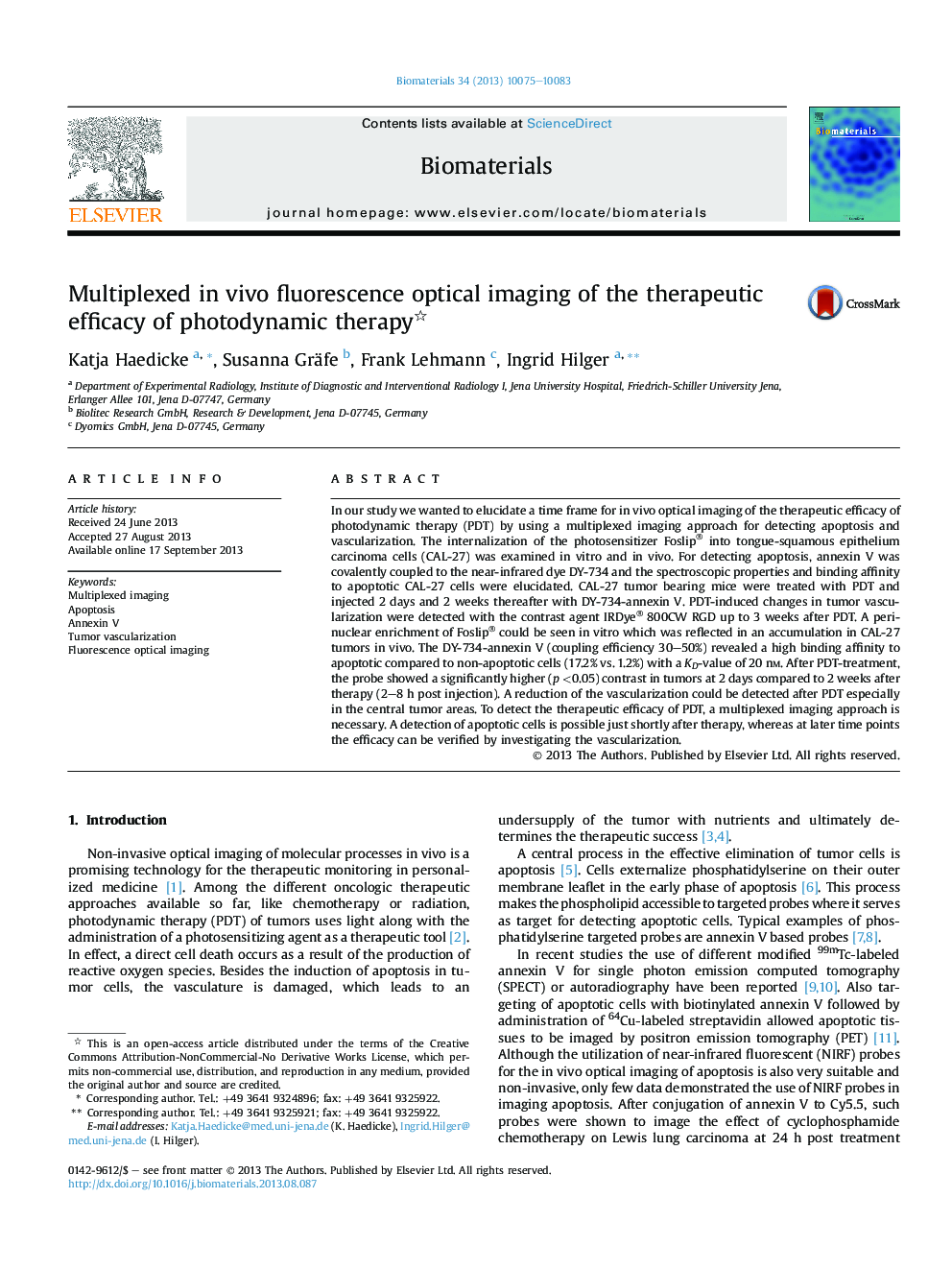| Article ID | Journal | Published Year | Pages | File Type |
|---|---|---|---|---|
| 10228142 | Biomaterials | 2013 | 9 Pages |
Abstract
In our study we wanted to elucidate a time frame for in vivo optical imaging of the therapeutic efficacy of photodynamic therapy (PDT) by using a multiplexed imaging approach for detecting apoptosis and vascularization. The internalization of the photosensitizer Foslip® into tongue-squamous epithelium carcinoma cells (CAL-27) was examined in vitro and in vivo. For detecting apoptosis, annexin V was covalently coupled to the near-infrared dye DY-734 and the spectroscopic properties and binding affinity to apoptotic CAL-27 cells were elucidated. CAL-27 tumor bearing mice were treated with PDT and injected 2 days and 2 weeks thereafter with DY-734-annexin V. PDT-induced changes in tumor vascularization were detected with the contrast agent IRDye® 800CW RGD up to 3 weeks after PDT. A perinuclear enrichment of Foslip® could be seen in vitro which was reflected in an accumulation in CAL-27 tumors in vivo. The DY-734-annexin V (coupling efficiency 30-50%) revealed a high binding affinity to apoptotic compared to non-apoptotic cells (17.2% vs. 1.2%) with a KD-value of 20 nm. After PDT-treatment, the probe showed a significantly higher (p <0.05) contrast in tumors at 2 days compared to 2 weeks after therapy (2-8 h post injection). A reduction of the vascularization could be detected after PDT especially in the central tumor areas. To detect the therapeutic efficacy of PDT, a multiplexed imaging approach is necessary. A detection of apoptotic cells is possible just shortly after therapy, whereas at later time points the efficacy can be verified by investigating the vascularization.
Related Topics
Physical Sciences and Engineering
Chemical Engineering
Bioengineering
Authors
Katja Haedicke, Susanna Gräfe, Frank Lehmann, Ingrid Hilger,
